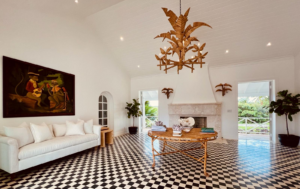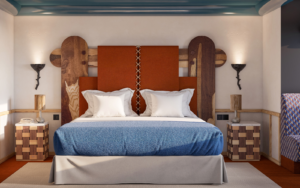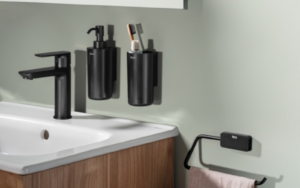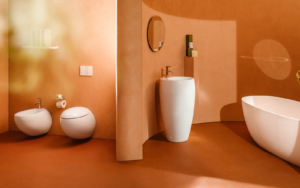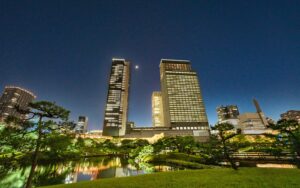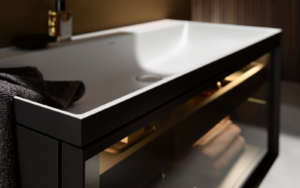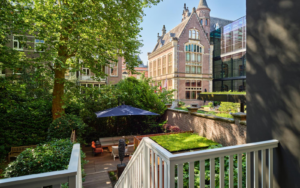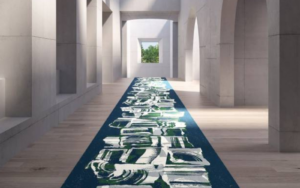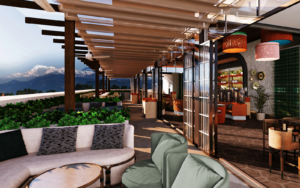Timeless charm, playful art and the origin story of Japan’s ancient capital inform and inspire the Six Senses Kyoto design narrative by BLINK Design Group, delivering a stunning urban oasis…
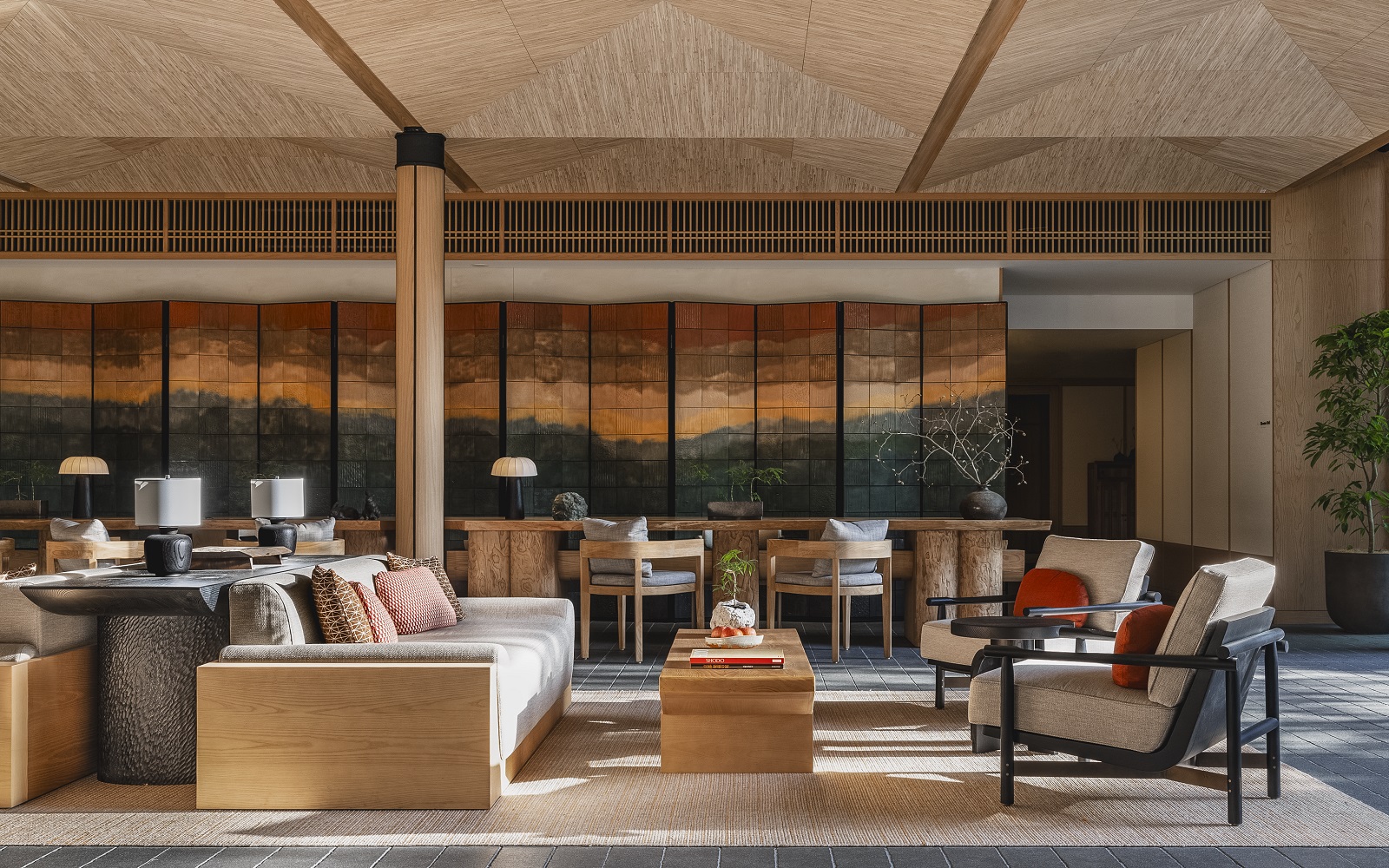
For the first Six Senses hotel in Japan, BLINK Design Group was tasked with conceptualising the ultimate oasis in downtown Kyoto, honouring the courtly elegance and refined charm that marked the city’s birth as a new capital, reimagined through the lens of contemporary style.
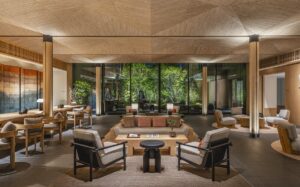
Image credit: BLINK / Ben Richards
The challenge was to bring the brand’s signature blend of luxury and heartfelt hospitality to the cultural heart of Kyoto. Nestled in the historic Higashiyama district, the resort, which opened in late April 2024, is strategically located for guests to immerse themselves in the city’s rich heritage, surrounded by iconic landmarks such as Buddhist temples, Shinto shrines, and traditional Japanese architecture, shaded by cherry blossoms and ringed by the cedar-covered mountains of the region.

Image credit: BLINK / Ben Richards
The project was tailor-made for BLINK’s philosophy of ‘placemaking’, where everything begins with a full immersion in local lore, culture, traditions and arts. BLINK founder and creative partner Clint Nagata explained how his team began with a deep dive into the heyday of the Heian era (794-1185C.E.); a time of refined sensibilities and poetic subtlety that saw a great flourishing of the Japanese arts.
“The abiding philosophy of this age was the concept of ‘miyabi’, a kind of heightened refinement, sense of order and appreciation of nature which became our mantra and flows through the entire design,” said Nagata. “Miyabi was part of the fabric of life and guided the arts and crafts of the period; an appreciation for the gestures and rituals that mark the passage of an ordinary day. The interplay of light and shadow, the changing colours and moods of the seasons”.

Image credit: BLINK / Ben Richards
Inner peace meets inner space in the Six Senses Kyoto’s 81 guestrooms and suites. Ranging from 42 to 238 square meters, these are ingeniously arranged to offer views of the peaceful central courtyard, the gardens of the neighbouring Toyokuni Shrine, or the seductive city panorama of treetops, temples, tea shops, and rooftops. The property looks into its inner courtyard to provide an introspective quiet ambience.
“Design that reconnects us with nature – biophilic design – is essential for providing people opportunities to live and work in healthy spaces with less stress and greater overall health and well-being,” continued Nagata. “The internal garden provides the first layer in connecting guests with nature. However, by bringing biophilic elements into the interior through pocket gardens, ikebana, hanging plants, skylights, natural materials, and textures (all locally sourced), the interiors will not only honour the history of Kyoto’s famous gardens but also provide guests with moments of pause and contemplation throughout the hotel”.
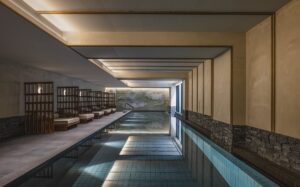
Image credit: BLINK / Ben Richards
This is borne out in elements like Washi partitions, Sakan, the plasterwork that flourished during Japan’s Edo period, and traditional Sudare Japanese screens, made of horizontal slats of high-quality bamboo to lend intrigue and privacy.
“Six Senses Kyoto will showcase local arts and artisans from Japan. The aim is to provide unique experiences for guests and create moments of pause where they can appreciate learning something new. By bringing local artisans in, guests will not only support the local arts but also encourage a continuation of these traditions,” said Nagata.
Design inspiration and accessories throughout the hotel will also have a sense of ‘asobi gokoro’ – a playfulness that references elements of Japanese culture, including ‘wabi-sabi’, the beauty of appreciating materials and items for simplicity and natural beauty. This is embodied in elements including quirky occupancy signage, Japanese ceramics and playful elements on door handles and wall finishes.
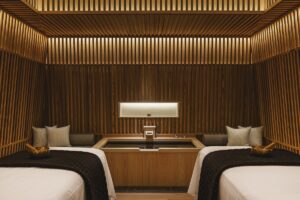
Image credit: BLINK / Ben Richards
Inspired by the Tale of Genji and the aristocracy of Kyoto’s past, the lobby and arrival experience sets the tone for the guest’s journey. The original tale was written in Orihon, concertina style. The folded shapes of Orihon binding inspire the ceiling details and specialist hiromi paper screens feature artwork with a welcome message. Sublime touches include artwork panels featuring Hikihaku, a weaving technique using gold and silver thread on Japanese paper, Raku-yaki ceramic tile artwork inspired by Kyoto’s mountains, natural stone flooring, and art inspired by Choju-Jinbutsu Giga Bronze scrolls.
Nagata explains: “Choju-giga is the beginning of all things quirky about Japanese culture,” explained Nagata, “illustrating animals in humanistic tasks”.

Image credit: BLINK / Ben Richards
What did the fox say? – The fox is an important figure in Kyoto, believed to be messengers of the gods; witty and playful. Unique Japanese Kitsune masks made from recycled washi paper line the corridors, intriguing and beguiling guests. The guestrooms feature subtle customized lighting, wall sconces inspired by traditional hand-carved wooden plates, bedside lamps featuring Kyoto woven metal and a playful highlight – a flippable screen dividing the bedroom and bathroom; one side a rich red lacquer, the other a traditional Japanese pattern etched into timber. Custom painted TV panel art is inspired by the Taketori-monogatari, a children’s tale of a rabbit that lives on the moon pounding mochi.
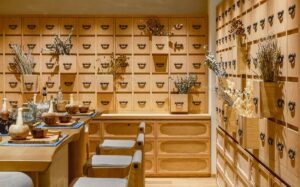
Image credit: BLINK / Ben Richards
The resort’s all day dining area, Sekki, is inspired by the life of a tree, from budding elements in the courtyard to lush and petrified textures in the main dining area, the private dining room and the open kitchen. The spaces are reminiscent of Kyoto’s gardens from the past, where Heian period writers gazed at imperial gardens while writing prose as the seasons changed.
Café Sekki is inspired by the rock gardens of Kyoto with a raw textured aesthetic and a main bar made of stone, along with Japanese knotted art pieces and woven rattan panels. Nine Tails, the cocktail lounge, features hammered glass screens for filtered light and privacy along with recessed seating niches for intimate gatherings. Live herb displays and apothecary drawers lend interest. The rooftop bar, meanwhile, echoes Tsuridono – open pavilions in the Japanese Court architecture style of the Heian period.
Banquet and function spaces are inspired by the Junihitoe, a formal 12-layered kimono worn in old Kyoto. Drawing inspiration from this layered approach and the accessories and patterns worn by inhabitants of Kyoto’s past, the Banquet and pre-function spaces are layered, including sliding screens and large display cases that filter light and play on what can and can’t be seen.
The hotel spa, meanwhile, plays with notions of traditional onsen bathing and also the benefits of being near water in motion.
Main image credit: BLINK / Ben Richards




